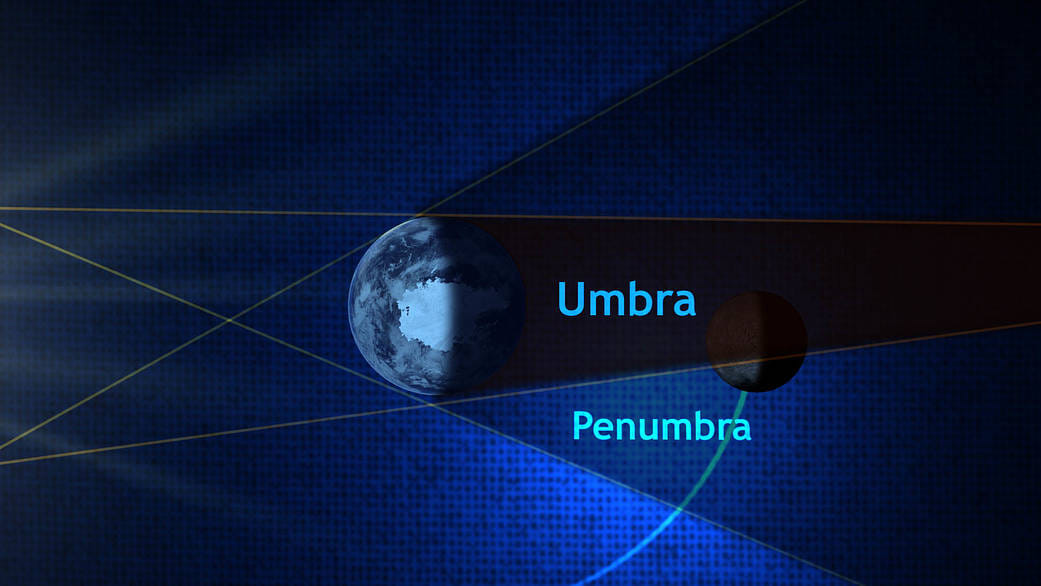Bengaluru: On the evening of 8 November, many parts of India will be privy to a partial eclipse of the moon as it rises over the horizon. The eclipse is a total lunar eclipse, resulting in what is commonly called a “blood moon” owing to the rusty colour the moon assumes; but it will only be partially visible from most parts of the Indian subcontinent.
The total eclipse will be evident over the Pacific Ocean, the western parts of North America and Canada, Greenland, and eastern parts of Russia. It will be visible as a partial eclipse when the moon rises in Asia and Australia, and when the moon sets in South America and Mexico. The continent of Africa (except Egypt), Western Europe, and the Arabian Peninsula will not see any eclipse of the moon.
A lunar eclipse occurs within or after a fortnight from a solar eclipse, and this one follows the partial solar eclipse on 25 October which stunned people across India with an apple-bite sunset.
Lunar eclipses have an umbral and penumbral phase because of the way the moon’s shadow falls on earth — the umbra is the darkest region of the earth’s shadow on the moon, while the penumbra is the lighter outer part of the shadow.

This total lunar eclipse will last 84 minutes and 58 seconds, while the partial eclipse will last for 219 minutes and 50 seconds.
Here is when the different phases of the eclipse begin and end:
Penumbral eclipse begins: 08:02 hrs UTC (13:32 hrs IST)
Partial eclipse begins: 09:09 hrs UTC (14:39 hrs IST)
Full eclipse begins: 10:16 hrs UTC (15:46 hrs IST)
Maximum eclipse: 10:59 hrs UTC (16:29 hrs IST)
Full eclipse ends: 11:41 hrs UTC (17:11 hrs IST)
Partial eclipse ends: 12:49 hrs UTC (18:19 hrs IST)
Penumbral eclipse ends: 13:56 hrs UTC (19:26 hrs IST)
The moon will be visible over the horizon as it rises in an eclipse state across the country. Unlike solar eclipses, lunar eclipses are safe to view with the naked eye.
The eclipse is more total eastward and more partial in the west. In some parts of the eastern India, the total eclipse peaks just when the moon rises, so some totality will be visible.

Here is when and where it would be visible in India (IST):
Imphal: 16:25 moonrise to 19:26 (maximum 16:29, some totality visible)
Port Blair: 16:49 to 19:26 (maximum 16:52, some totality visible)
Kolkata: 16:52 moonrise to 19:26 (maximum 16:54, some totality visible)
Bhubaneshwar: 17:05 to 19:26 (maximum 17:08, some totality visible)
Leh: 17:17 to 19:26 (maximum 17:19, only partial)
New Delhi: 17:28 to 19:26 (maximum 17:31, only partial)
Nagpur: 17:32 to 19:26 (maximum 17:34, only partial)
Chennai: 17:38 to 19:26 (maximum 17:42, only partial)
Bengaluru: 17:49 to 19:26 (maximum 17:57, only partial)
Mumbai: 18:01 to 19:26 (maximum 18:03, only partial)
Rajkot: 18:04 to 19:26 (maximum 18:06, only partial)
Kavaratti, Lakshadweep: 18:13 to 19:26 (maximum 18:15, only partial)
While there are many habits around eclipses in Indian culture and other indigenous cultures as well as astrology, no solar or lunar eclipse affects human life in any way.
The next total lunar eclipse will occur on 14 March, 2025.
Also read: India accounts for more than 80% of deaths caused by snakebites globally, study finds






